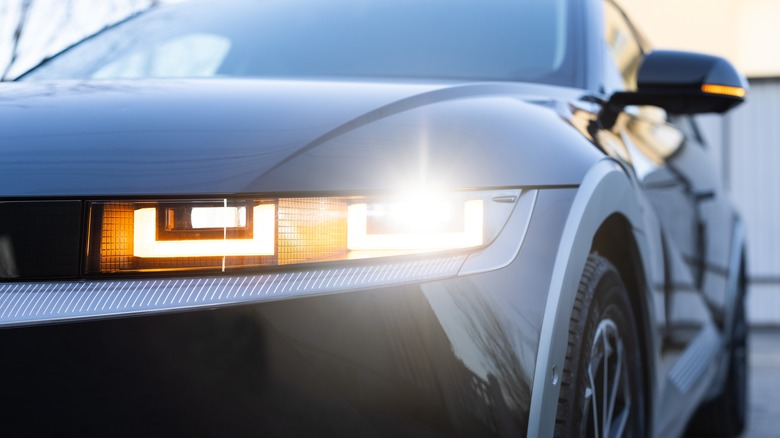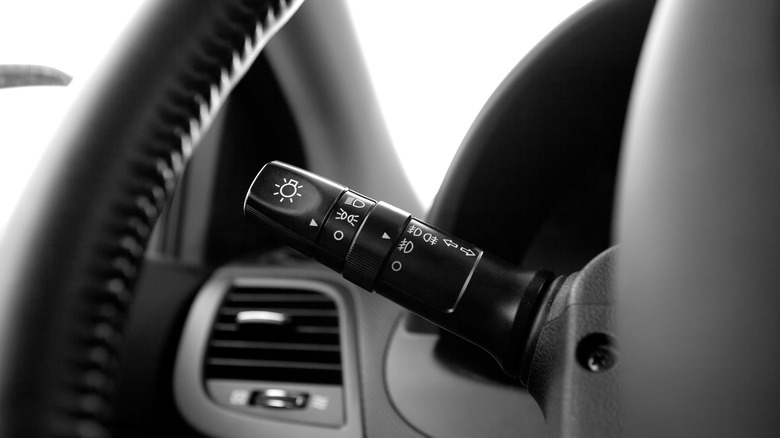Is Blinker Fluid Real? The Long-Running Auto Prank, Explained
Brake fluid, engine oil, coolant ... there's always something to keep track of, fill, or replace when maintaining your car. Is blinker fluid yet another thing to add to your checklist? Searches for breaker fluid have gone up on Google the past month as more and more car owners wonder if they're forgetting to ask mechanics to check if it's running low. But don't worry — breaker fluid is not real.
Blinker fluid is a prank people often pull on new drivers or those who aren't super-knowledgeable about cars, similar to when Volkswagen faked a "Voltswagen" rebrand. There are plenty of videos online of people telling an unsuspecting victim to grab blinker fluid at an auto store or ask a mechanic to replace it. There's also "blinker fluid" for sale all across the internet, including fake bottles on Amazon, Walmart, and Etsy. It's even made its way into car shops.
It's unclear when the blinker fluid prank began but there's an entry in Urban Dictionary from 2006 and it started appearing in Google searches in 2007. It's theorized that this prank predates the internet, possibly a reference to when people used to joke about older cars needing "blinker fluid topped off" when headlights filled with water if the seal was too loose. Whatever the case, it's a "gotcha" prank meant to be played on people who might not know much about a niche topic, along the lines of the classic snipe hunt.
How do blinkers work, then?
Blinkers, also called turn signals, are powered by electricity — not fluid. Blinkers start working when they're activated by a turn-signal lever inside the car, often attached to the steering wheel. When this lever is clicked up or down, an electrical signal is sent to the relay and forwards the command to the turn-signal lights outside the car. Electricity then flows from your car's battery to the lights.
To create the blinking effect, the power is sent in pulses. It's deactivated when the turn is complete or the lever is switched back into place due to a mechanism in the notched hub the lever is in. (Pro tip: If one of your car's blinkers is ticking faster than the other, there's a problem.)
Blinkers definitely do not need fluid to work, but cars actually require plenty of other fluid. This includes transmission fluid, brake fluid, engine coolant, windshield wiper fluid, power steering fluid, and, of course, motor oil. All of them need checking, filling, and replacing at different times. Here's how often you should check each of your car's fluids to keep its brakes healthy, gears from grinding, and the engine from overheating.

